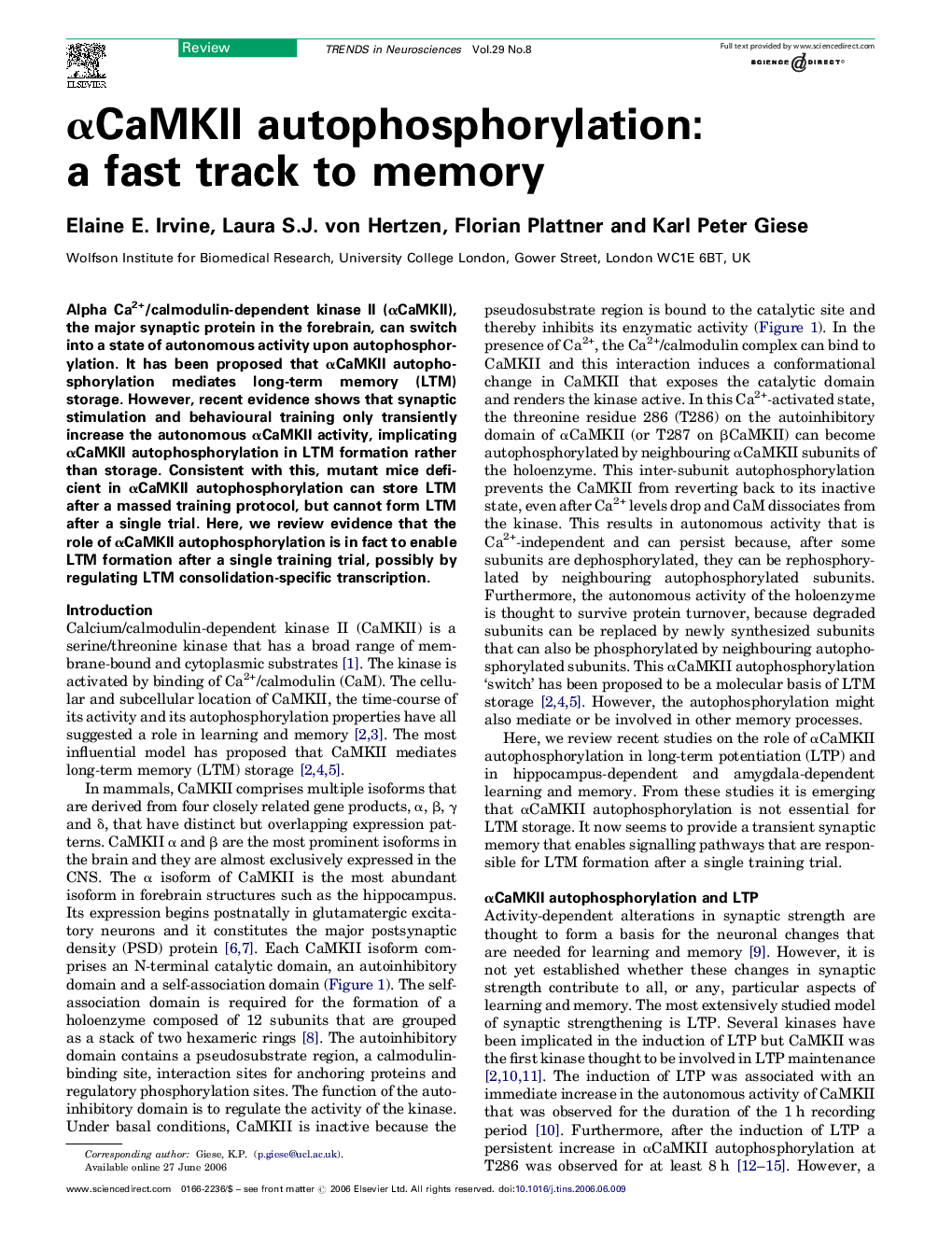| Article ID | Journal | Published Year | Pages | File Type |
|---|---|---|---|---|
| 4355040 | Trends in Neurosciences | 2006 | 7 Pages |
Alpha Ca2+/calmodulin-dependent kinase II (αCaMKII), the major synaptic protein in the forebrain, can switch into a state of autonomous activity upon autophosphorylation. It has been proposed that αCaMKII autophosphorylation mediates long-term memory (LTM) storage. However, recent evidence shows that synaptic stimulation and behavioural training only transiently increase the autonomous αCaMKII activity, implicating αCaMKII autophosphorylation in LTM formation rather than storage. Consistent with this, mutant mice deficient in αCaMKII autophosphorylation can store LTM after a massed training protocol, but cannot form LTM after a single trial. Here, we review evidence that the role of αCaMKII autophosphorylation is in fact to enable LTM formation after a single training trial, possibly by regulating LTM consolidation-specific transcription.
